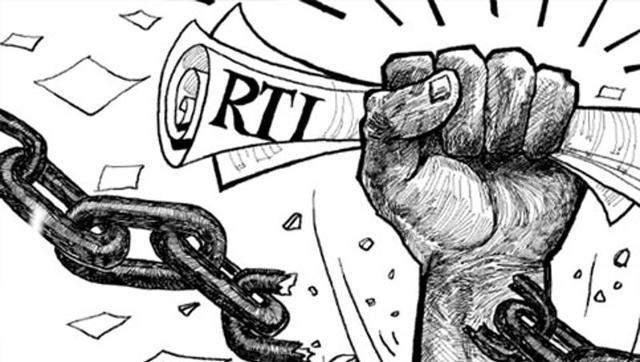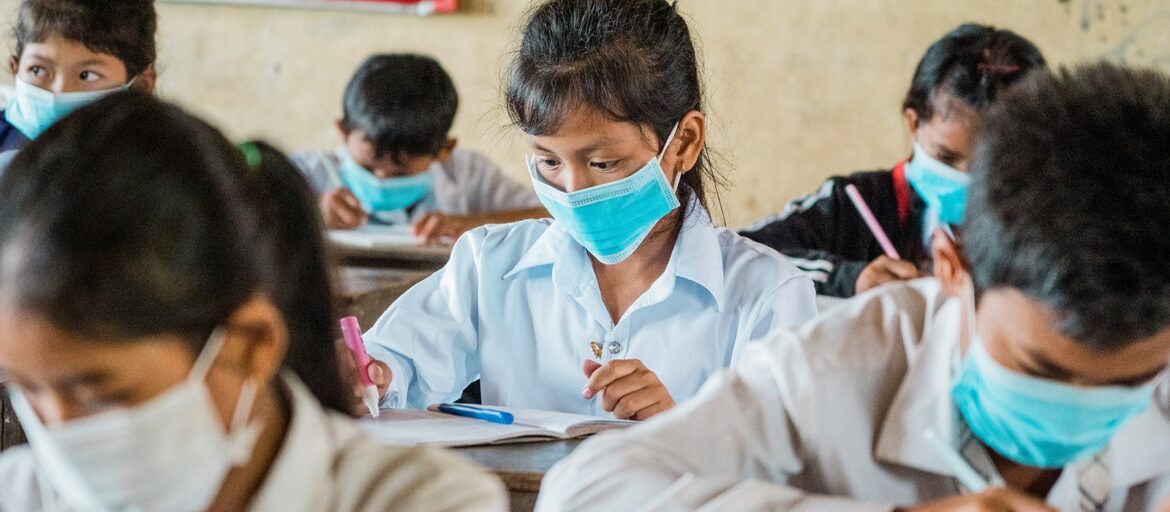By Mehreen Mander
Right to Information is perhaps one of the most effective tools to deepen democracy and actively seek accountability by enabling transparency. It gives the citizen the right to seek information held by public authorities which may be of public interest. This information can, among other things, be used as a basis for public interest litigation, and general means for justice.
For instance, in 2018, the Ministry of Women and Child Development released a report called ‘Women in Prison’ which studied the condition of women in prison and informed action for the improvement of the same. It found out that there was a severe lack of female staff, basic sanitation and hygiene facilities which meant that physical, sexual, reproductive and mental health needs of female prisoners was being severely compromised. Most of the prisons are overcrowded. There are barely any provisions for education or vocational training apart from those for basic literacy. It also found that physical and sexual violence at the hand of authorities and other prisoners was commonplace, and complaints were not taken seriously.
This report also gave suggestions taking into view National Model Prison Manual, recommendations of the Mulla Committee among others to improve the condition of such prisons and make arrangements for those women who live with their children. However, three years on, there has not been much reporting about the steps taken to implement these suggestions. A concerned citizen seeking to obtain information about the implementation of these suggestions in general, or the condition of a prison in particular, may do so by exercising their right to information.
This article discusses the procedure to obtain information under Right to Information Act, 2005. It also discusses some important judicial precedents related to the exercise of RTI.
How to exercise the right to information?
What Is RTI?
RTI means Right to Information. It was held to be a part of the fundamental right to freedom of speech and expression in the 1973 decision of Bennett Coleman and Co. v Union of India. The process and machinery to exercise this right is under the RTI Act, 2005. Citizens have the right to, among other things:
- to ask any question to the government to seek any information
- to take copies of any government documents
- inspect any government documents
- inspect any government works
- take sample of material of any government work
Who can ask for the information under RTI?
- Any citizen of India can ask for information under the RTI Act.
- Overseas Citizen of India and Persons of Indian origin card-holders
- Any functionary in their personal capacity
- Any person representing a group of individuals like an association, HUF,
If you are out of India, then the RTI Application can be made with the Public Information Officer of the local Indian Embassy/Consulate/High Commission who will give you information regarding the amount of application fee and modes of payment.
Who Is Covered Under The RTI?
All bodies constituted under the Constitution or any other law or government notification and all public bodies. The president, the legislature, the judiciary, all related ministries, departments, agencies, any other body which is owned, controlled or substantially funded by the government.
However, security and intelligence organizations such as RAW, Intelligence Bureau, BSF, ARF, NCB etc. will not be covered under RTI. However, CBI and Directorate General of Central Excise Intelligence are not included in this exception.
Private bodies which are owned, controlled and substantially funded by the government are covered directly. Other private bodies are covered indirectly – that means if the government department is empowered to access the information from any private body, then the same can be accessed by citizens under RTI act, through that government department.
What Is the Fee?
There is an initial application fee. This varies from state to state. It is around Rs. 10/- as per Central RTI Rules. BPL citizens don’t need to pay this.
After that, there might be document charges which depend on the information you seek to obtain. As per Central RTI Rules, it is Rs.2 per A4 size page, Rs 50/- per CD and the actual cost in respect of printed publications, or Rs 2/- per page of A4 size extract copy. There is also a fee for inspection of documents. The first hour is free, however there is a fee of Rs. 5/- for every subsequent hour.
Normally, a Public Information Officer (PIO) is supposed to supply information within 30 days of receiving an RTI request. If the information is not supplied within 30 days, then the applicant is entitled to receive the information free of cost. However, if there are document charges, and the PIO has informed of such charges, then the days between intimation of charges and actual remittance of the document charges will not be calculated.
The fee can be deposited in cash, through demand draft or banker’s cheque or postal order, or even through stamps in some states.
Who do I approach to get the information?
You have to approach the concerned PIO in the department who holds the information that you seek.
A Public Information Officer is an officer designated by the public authority in every office whose job it is to provide information to citizens requesting for information under the Act.
Once you have identified which department, and or office holds the information you seek, then you have to identify who the concerned PIO in that office is. The list of PIO is available on the website of the public authority, or available physically on their premises. You can contact them or visit them to find out the list of PIOs.
There might also be multiple PIOs in one public authority who deal with different subject matter. You can find out which PIO is the one concerned with your subject matter from the list, or by contacting the office. The contact details of such a PIO can be obtained from the public authority.
How Do I Make The Application?
You can make the application online or offline.
Offline procedure:
- Identify the RTI subject of the information you seek to obtain. Give it a clear and articulate “Topic Title.” This topic title is used for reference purposes, and to give the officer concerned a good idea.
- Identify the department or public authority concerned with the subject matter of your information. Then, identify the particular office or unit which holds that particular document that you seek to obtain. Whether the department or office holds the information might be available on website under the RTI Caption, or can be sought directly by contacting or visiting the office.
- Identify the concerned PIO who deals with the subject matter you are interested in. List of PIOs is available on the website or in office premises. The concerned PIO is the one who has direct access to the information held by or under the control of the public authority. Choosing the right PIO helps to expedite the process. If you want information held by Collector Office, then must not approach the Minister’s office.
- Search for RTI procedure applicable to the public authority because it varies. There are different RTI Rules for Lok Sabha, Rajya Sabha, Supreme Court, High Courts and Legislative Assemblies.
The following things must be adhered to
- Word Limit and Formats
- Application Fee
- Document Charges
- Inspection charges
- Mode of payment of fee
- Identify the precise document that contains the decision-making process, or which conveys the decision or implements the decision of the authority. Mention that you need that particular document.
E.g., If you want to know why Mr. X was transferred from place A to place B, you have to find out on your own that that the reasons for the transfer are recorded on a document called Note Sheet. So, you request for “certified copy of note sheet containing notings of various officials and approval of competent authority for the transfer of Mr. X from place A to place B in the month of May, 2020”
- Draft an RTI. An RTI can be drafted in English, Hindi, or official language of the state, if contacting State PIOs. The PIO is required to assist a disabled or illiterate applicant, and even an applicant facing trouble in reducing his query to writing.
The following things need to be mentioned: –
- Address of the PIO
- Name and Address of the applicant
- Contact number of the PIO
- Subject matter of the information
- Information sought – the exact document, no need to mention reason for seeking it though. Don’t ask queries
- Submit the RTI
- Through speed post
- Registered post
- Hand delivery if the office is nearby
- Through CAPIOs and Designated Post offices
Always get proof of submission of application for future use. Don’t use courier service or ordinary/book post for this use.
Online procedure:
If you are seeking information from authorities under Central Government, you can also make an RTI application online through rtionline.gov.in. You can do so by filling the form on the website. The word limit for this is 3000 characters (not words). If the text exceeds 3000 characters, then you can upload the application as a PDF as well.
You are then required to make the payment through online modes: (i) internet banking through SBI and its associated banks (ii) using atm cum debit card of SBI (iii)credit/debit card of Master/Visa. You get a unique registration number which you can use for future reference.
Can A PIO Refuse Information to An Applicant?
Yes, there are certain subjects listed in Section 8 in the RTI Act on which the PIO can refuse information. These subjects include: – confidential information received from foreign governments, information prejudicial to security, strategic, economic or scientific interest of the country, information which breaches the privilege of legislatures, or information related to any third party.
Further, when the information sought relates to a third party, the Central or State PIO is obliged under Section 11 to give such third-party notice that disclosure of such information is sought to be made. The third party can make representation as to why the information must not be disclosed. The discretion about whether or not to disclose the information rests with the PIO concerned.
What do I do if I don’t get a response from the PIO?
The applicant who has filed the RTI Application, or a third party whom the information sought relates to, or has been supplied and is treated as confidential, is entitled to a first appeal if
- there is no response within the stipulated time i.e., 30 days, or
- the decision of the PIO is found be not satisfactory, or
- if the information provided is incorrect/misleading, or
- if the fees demanded is exorbitant
- or any other reason.
Then you can approach the First Appellate Authority (FAA) who is the officer higher in rank than PIO. Details about the FAA is available on the website or the office of the same public authority.
If you are not satisfied with the decision of the FAA, you can go file for a second appeal with the Information Commission at the Centre or respective states. The grounds on which this appeal can be made are provided under section 19 of the RTI Act.
Impact of 2019 Amendment Bill
The Right to Information (Amendment) Bill, 2019 was passed by the Parliament in July 2019. It proposes amendments to the term and salary of the Information Commissioners appointed under the Act.
Under the 2005 Act, the Chief Information Commissioners (CIC) and Information Commissioners (IC) were appointed by the State and Central level, for a term of five years. The Amendment Bill removes this provision giving power to the central government to notify the term of the office for both CICs and ICs. The Bill also brings the question of determination of salary, allowances, and other terms and condition of service for both state and central CICs and ICs under the authority of the central government. Further, the bill removes a provision of the 2005 Act which reduced the salary of a CIC or IC to the extent of pension or any other retirement benefit received by the virtue of having served in any government service.
These amendments are feared to compromise the autonomy and independence of information commissioners. They threaten the principle of federalism by vesting control exclusively in the hands of the Centre. It goes against the Supreme Court judgment in Anjali Bharadwaj v. Union of India wherein the court had stated that CICs and ICs shall be appointed on the same terms and conditions applicable to Chief Election Commissioner/Election Commissioner.
Important Judgments
One of the most contentious issue with respect to RTI Act has been the scope of definition of “public authorities.” Some judgments are examined hereunder.
Section 2(h) of the RTI Act states
““public authority” means any authority or body or institution of self- government established or constituted—
- by or under the Constitution;
- by any other law made by Parliament;
- by any other law made by state legislature;
- by notification issued or order made by the appropriate Government, and includes any—
- body owned, controlled or substantially financed;
- non-Government organization substantially financed, directly or indirectly by funds provided by the appropriate Government”
Delhi High Court in National Stock Exchange of India Limited v. Central Information Commission stated that the mere establishment of a body under a statute does not by itself render it a public authority for the purposes of RTI Act. In Kribhco v. Ramesh Chandra Bawa, the Court stated the entity’s activities are also important in determining its status as a public authority.
In reference to the second part of the definition, it was held in Indian Olympic Association v. Veeresh Malik it was held that the aim is to bring bodies that may not have been established by or under a notification, but are still substantially financed owned or controlled by the government. In previous judgments such as Professional Assistant for Development Action v. The Jharkhand State Information Commission, it has been held that whether an authority is “substantial funded” must not necessarily be based on a determination of quantum of such funding, though it has been used as a basis in some decisions such as Indian Olympic Association. Benefits received by institutions, such as share capital contribution, subsidies, land allotment etc. were considered substantial funding in Hindu Urban Cooperative Bank Ltd. v State Information Commission. Registered societies, cooperatives, autonomous institutions like sports associations, schools and educational trusts have all been brought under the scope of “public authority” by various High Court decisions on the basis of substantial funding.
Similarly, in the interpretation of Section 8 of the RTI Act, which lists the information exempting from the application of Right to Information, there have been some landmark decisions.
In the case of CBSE v. Aditya Bandopadhyay, Supreme Court held that RTI Act will prevail over the bye-laws of examining bodies in context of all exams. A student had made request for inspection and reevaluation of answer books, which CBSE has rejected on the grounds that this information is exempted under Section 8(1)(e). The Supreme Court held that the examining body is bound to provide access to an examinee unless it is able to prove that it is exempt under the provision.
In the CPIO, Supreme Court of India v. Subhash Chandra Agrawal, the Supreme Court held that it is in public interest that the office of Chief Justice of India comes under “public authority” for the purpose of RTI Act. However, the details such as appointment letter, salary details, gifts, IT returns of an officer working at the Regional Provident Fund office were held to be personal information under Section 8(1)(j) in Girish Ramchandra Deshpande v. Central Information Commission. Similarly, in RK Jain v. Union of India the information related to charges, penalties and sanctions imposed on an employee were considered to be matter which did not have any public interest, so such disseminating such information would be an unwarranted invasion of privacy.
In Canara Bank v. CS Shyam, Supreme Court held that Section 11 which deals with information relating to third parties is not an exemption but a procedural provision. It provides notice to the third party about disclosure of any information relating to them, and even if such a third-party objects, the information can be released in larger public interest.
The process for filing an RTI application has been criticized for being a tad cumbersome, and critics believe that it can be simplified. There also seems to be a situation where a lot of citizens are not aware about this right and the manner to exercise it. Nevertheless, it remains that right to information is a powerful tool available to the common citizen to seek information from public authorities. As seen above, the courts have taken a rather expansive view of what falls under the ambit of public authorities and what is the information that is available under the Act. Effective exercise of the right will bring about more transparency in government functioning and deepen democracy in governance.






